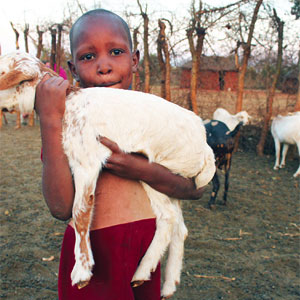Bird flu. SARS. West Nile virus. These and many other emerging infectious diseases have spread to humans from the animal world. Scientists wonder where the next big outbreak will come from. The School's new Human-Animal Medicine Project, which came here from Yale University in 2013, explores these and other links between humans, animals, and the environment to improve health and prevent disease. The research is led by Peter Rabinowitz, associate professor of Environmental and Occupational Health Sciences and an associate professor of Global Health.

Photo: Gemina Garland-Lewis
"Human-Animal Medicine explores the convergence of human, animal and environmental health in an increasingly crowded and interdependent world," explains Rabinowitz. "Recent global pandemics such as SARS and influenza H1N1 require that we look at a new paradigm for healthy coexistence, known as 'One Health,' that seeks to maximize the health of people, animals and ecosystems."
Rabinowitz and colleagues at the UW, the Allen School for Global Animal Health at Washington State University, and CDC Kenya recently received a Grand Challenges Exploration Grant from the Bill & Melinda Gates Foundation. They will study whether children in Kenya living near animals share gut microbes that could affect their ability to absorb nutrients. About 40 percent of children under five in the study area are malnourished, according to Rabinowitz. The research could lead to an intervention with livestock that improves both animal and children's health.
Other projects directed by Rabinowitz explore One Health models for dairy and swine agriculture, and whether hydraulic fracking affects the health of animals as well as people. Animals can be sentinels of environmental health hazards, he says (think canary in the coal mine). Environmental and Occupational Health Sciences PhD student Heather Fowler, a public health veterinarian, is working with Rabinowitz and Washington State Labor & Industries to determine the extent of illness and injury among animal-care workers, including employees in veterinary clinics and pet grooming parlors. She's also exploring healthy models for keeping chickens in the backyard that consider the health of the chickens, the people, and the local environment.
